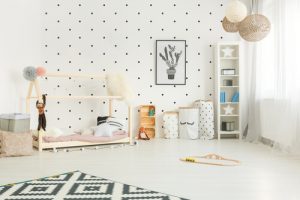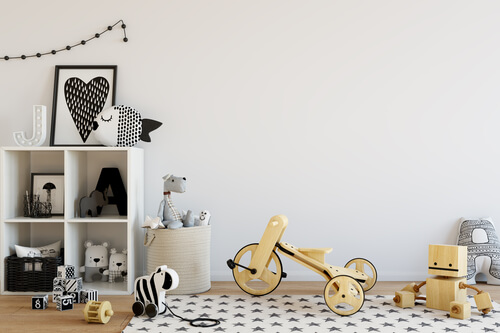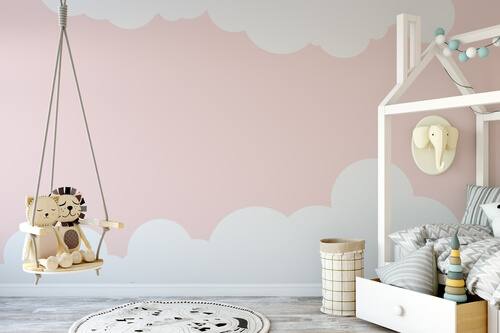The Montessori Method for Decorating a Child's Room

Learn the Montessori educational system’s method for decorating a child’s room to help develop their creativity in a unique and safe environment.
When it comes to decorating our baby’s room, we may start buying numerous accessories that we think will make them feel comfortable in their new environment.
But sometimes, what parents consider comfortable isn’t really comfortable for a child.
What is the Montessori method for decorating a nursery?
The Montessori method is a child-centered approach to education with optimal results in learning.
As each child has different abilities, the basis for the Montessori method is to allow each child to experiment with those abilities.
One of the main characteristics of the system is that little ones have an innate desire to learn and interact with their environment.
Therefore, an environment designed for a child is required, rather than encouraging them to seek the comforts of an adult.
Exploration is one of the main objectives of Montessori education, and what better place to do this than in the child’s very own room.
A child’s room can become a place to discover and learn. With the Montessori method, all of these objectives can be achieved through specific decoration.

How to implement the Montessori method in a child’s room
It’s very common to see children’s rooms that adapt to the needs of parents. However, decorating a nursery with inspiration from the Montessori method implies the following:
- Space. The concept focuses on a large, clean and well-lit room with good ventilation.
- Bed. It is recommended to avoid the common bars and enclosed cribs after the age of 18 months. The Montessori method for decorating a nursery encourages having a bed at ground level. This way, you protect your child’s safety and he can explore without getting stuck on or off the bed.
- Walls. Choose colors that generate tranquility, such as warm tones. Remember this will be your child’s personal space. Warm colors invite relaxation and pleasant rest.
- Furniture. Furniture such as drawers, chairs, pictures and shelves should be at the height of the child, not at the height of an adult. This way, your child will feel comfortable in the environment because everything will be within reach.
- Floor. The floor should be free of obstacles so the child can easily move around the room. If possible, choose carpets that allow the child to explore different textures.
- Toys. Toys should be made of natural materials such as cloth or wood instead of plastic. Keep in mind that very elaborate toys with lights and sounds limit creativity.
- Accessories. Mirrors allow children to observe and discover their bodies. You can also put up posters of nature, animals or landscapes. Coat racks should be placed so children can hang their clothes up by themselves.
- Order. Order should be respected and encouraged, and a space should be available for everything. There should never be too many things in the room to make it impossible to keep it tidy.

7 advantages of decorating a nursery following the Montessori method
Decorating a child’s room with the Montessori method has the following advantages:
- The child becomes more autonomous and independent.
- It gives the child freedom to develop his creativity.
- Learning occurs faster and adapts easily to different environments
- It contributes to the integral development of the child.
- The child is at the center of his own learning.
- The child’s learning occurs at his own pace.
- The Montessori method views the child as a capable being rather than helpless.
Go ahead and give your child a Montessori-style room.
Apart from all the advantages mentioned above, these ideas are also more economical and functional than traditional rooms.
You can also find additional decoration ideas with a little online research.
All cited sources were thoroughly reviewed by our team to ensure their quality, reliability, currency, and validity. The bibliography of this article was considered reliable and of academic or scientific accuracy.
- Aldana, R. (2019, agosto 3). 5 hallazgos de la neurociencia que respaldan la pedagogía Montessori. Recuperado abril de 2020, de https://lamenteesmaravillosa.com/5-hallazgos-la-neurociencia-respaldan-la-pedagogia-montessori/
- Sabater, V. (2019, junio 4). Los 15 principios de María Montessori para educar niños felices. Recuperado abril de 2020, de https://lamenteesmaravillosa.com/los-15-principios-de-maria-montessori-para-educar-ninos-felices/
This text is provided for informational purposes only and does not replace consultation with a professional. If in doubt, consult your specialist.








